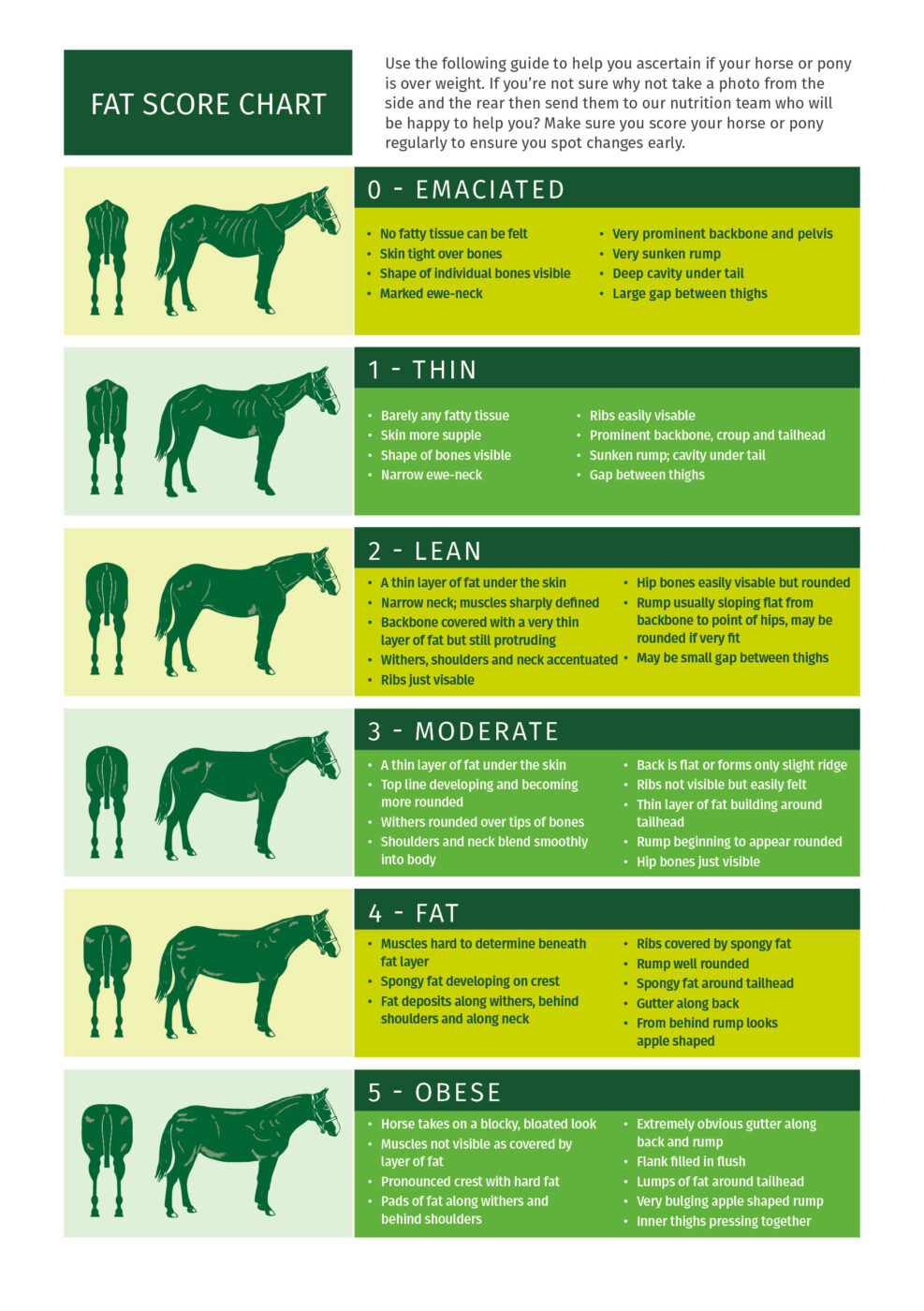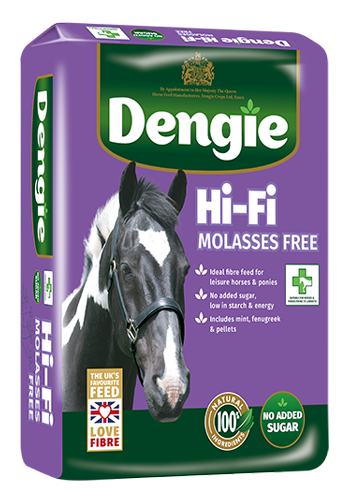How to body condition score your horse
Body condition or body fat scoring your horse can be tricky. Below we give our tips and guidance to help you.
Why do you need to body condition score your horse?
Research shows that some professionals find it hard to raise the subject of an animal or a person being overweight. In contrast, nutritionists are not afraid to raise this issue as being overweight or obese is a risk factor for several diseases including laminitis in horses.
What is body fat scoring?
Identifying that a horse is overweight helps us to assist horse owners to manage their horse in the most appropriate way. As nutritionists, it’s easier for us to be objective when viewing a horse, and much harder for horse owners to do so. That’s why body fat scoring systems were developed as, as they try to make assessing a horse more objective.
At Dengie we use a 0-5 body condition scale, with 0 being emaciated through to 5 being obese. There are other score systems such as the 1-9 scale. As long as you are consistent in which body condition scale you use it doesn’t matter which one you choose. We recommend fat scoring your horse monthly and combining it with weigh taping on a fortnightly basis, to record and monitor your horse’s fat coverage throughout the year.

Often horses will gain weight through the summer months due to an abundance of grass. For these horses we would encourage some weight loss over the winter to help keep them healthy which is what would happen in their natural environment. If they don’t lose weight in winter, then the cumulative effect is excessive weight gain which predisposes a horse or pony to laminitis.
How to body condition score a horse
When assessing a horse, there are three main areas to look at; the neck, over the ribcage and the rump. The whole impression of the horse is important and other areas of the body are important too, but these three are key. Fat scoring is hands on, in each area we are feeling how much fat is present.
Starting with the neck, the key question for horses that are overweight is whether the crest is muscle or fat. If your horse is a leisure horse that’s not doing much work then it’s more likely to be fat. Fat tends to feel spongy and creases when the neck is bent. If you view the horse from a safe distance behind, fat can also wobble and move from side to side as the horse walks.
The rib cage – can you see your horse’s ribs? If you can’t, can you feel them and how hard are you having to press to feel them. The difference between a body condition score of 2 and 3, is that with a score of 2, a horse’s ribs will just be visible and at a 3 they are covered. It is normal and healthy for a fit horse such as an eventer, to have ribs that are just visible.
For the hindquarters, we are looking at the shape of the horse’s rump. Horses that are overweight may have an apple shaped rump and fat at the head of the tail. They may also have a gutter along their spine. Horses that are leaner, may have sloping quarters, although they may be rounder if they are fit and well-muscled.
Three key messages to take away when body condition scoring your horse:
- For the most accurate results, weigh tape your horse at the same time of day, by the same person and check the position of the weigh tape.
- Weigh tape fortnightly and use in conjunction with fat scoring, we recommend doing this on a monthly basis.
- Plot your horse’s progress on a graph to monitor their weight changes throughout the year.
If you need help to monitor your horse’s weight, call the Dengie Feedline on 01621 841188 or click here to fill our feed advice form. Dengie’s horse feed has been formulated to help you choose the right diet for your horse or pony, whatever their age or workload – get in touch to learn more.



